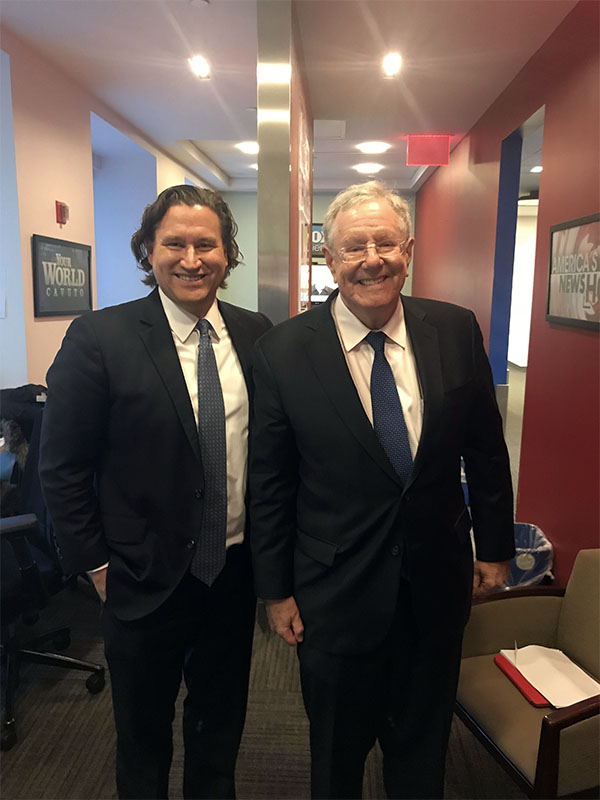After months of volatility, markets relaxed a bit last week. For the first time since October, the S&P 500 went 5 days without a 1% gain or loss.1 The Cboe Volatility Index, or VIX, also fell to lower than 20—in December, it spiked above 35.2
For the week, the S&P 500 added 2.54%, the Dow gained 2.40%, and the NASDAQ increased 3.45%. All three indexes are in positive territory for 2019.3 International stocks in the MSCI EAFE grew as well, with a 2.85% weekly gain.4
What drove last week’s gains?
Updates on trade and monetary policy contributed to investor decisions, yet again.5
1.) The Federal Reserve made dovish comments.
Last week, multiple Fed officials gave speeches indicating our central bank would carefully approach its interest rate decisions in 2019. Fed Chairman Jerome Powell described the policies as “flexible” and “patient”.6
2.) A trade resolution seemed more likely.
Many investors believe that efforts to resolve trade tension between the U.S. and China made progress last week. On Wednesday, January 9, talks concluded in Beijing after three days of negotiations, and China said the “in-depth” meetings made a resolution possible.7 The next day, U.S. Treasury Secretary Steve Mnuchin announced that a high-level Chinese policy advisor is coming to D.C. later this month for further talks.8
What is ahead?
Last week’s trade and policy headlines seemed to ease some of the risks on investors’ minds.9 However, both challenges and opportunities remain.
This week marks the beginning of U.S. corporate earnings season. Analysts have low expectations for companies’ 4th-quarter performance, especially after a number of large corporations released warnings about their results. However, analysts still predict that S&P 500 companies experienced 14.5% profit growth. In addition, the generally sour, pessimistic mood surrounding earnings could support equities in two ways: 1) Investors may not react strongly if companies miss projections, and 2) any companies that have surprisingly good results could see stock price jumps.10
Along with earnings results, investors will be paying close attention to companies’ commentary on business in China.11 Some experts believe Chinese economic growth is slowing, which is already affecting market performance. On Friday, markets stumbled a bit as analysts considered data and commentary on China’s economy. These details will remain important to watch—and see how it relates to trade.12
In addition, while the U.S. federal government shutdown has not yet had a large market impact, if it continues for too long, it could sizably affect the economy.13
We will continue to monitor these and other financial perspectives as we determine where the markets are—and what may be on the horizon. If you have any questions, we’re here to talk and listen.

I had a busy Friday, as I was on three segments on Fox Business.
In the earlier segment, I was on with Steve Forbes, and he agreed with my assessment of Fed Chair Powell:
Terrence Mills, who runs Moonshot, and Mahoney Asset Management, uses their services for our web site, blast, etc. attended the Consumer Electronics Show in Las Vegas last week. I asked Terence to share his experience, as many ‘investment themes’ come out of this trade show.
Artificial Intelligence took center stage at the Consumer Electronics Show (CES) in Las Vegas last week. On display was a mouthwatering preview of the gadgets and devices that people will find themselves using in the not too distant future.
Everyone from Hisense, China’s leading electronics manufacturer, showing off their AI driven television that can determine what you are watching and automatically improve the viewing experience to LG, who introduced a beer brewing machine for the home and a paper-thin OLED TV. AI pervaded the show. In fact, there was a separate area that did nothing else, but feature AI. Almost every major company was showing their flavor of AI solutions and applications meant to attract consumers in mass. But, there was a lot more. Harley Davidson even used the show to announce the commercial launch of its first electric motorcycle, called LiveWire. The hot bike will have cellular connections, as many as today’s cars do, so people can keep track of their bike’s charge or where they parked it through an app. P&G, known for Pampers diapers and Tide detergent, showcased heated razors, a toothbrush with AI and a wand-like device that scans the skin and releases serum to cover up age spots and other discolorations or dark spots.
This year also proved that smart speakers are not a fad. It was also noticeable that this year’s CES was less focused on autonomous cars as compared to last year, though the buzz is still very well heard about autonomous innovations. The conversation is now about safety, with Audi and Toyota gearing up with safety marketing campaigns that will eventually translate into the consumer sales pitch.
CES featured 4,500 exhibitors and more than 180,000 people were said to have attended. However, when touring the main floor and affiliated venues, the show did not seem that well attended as compared to previous years.


